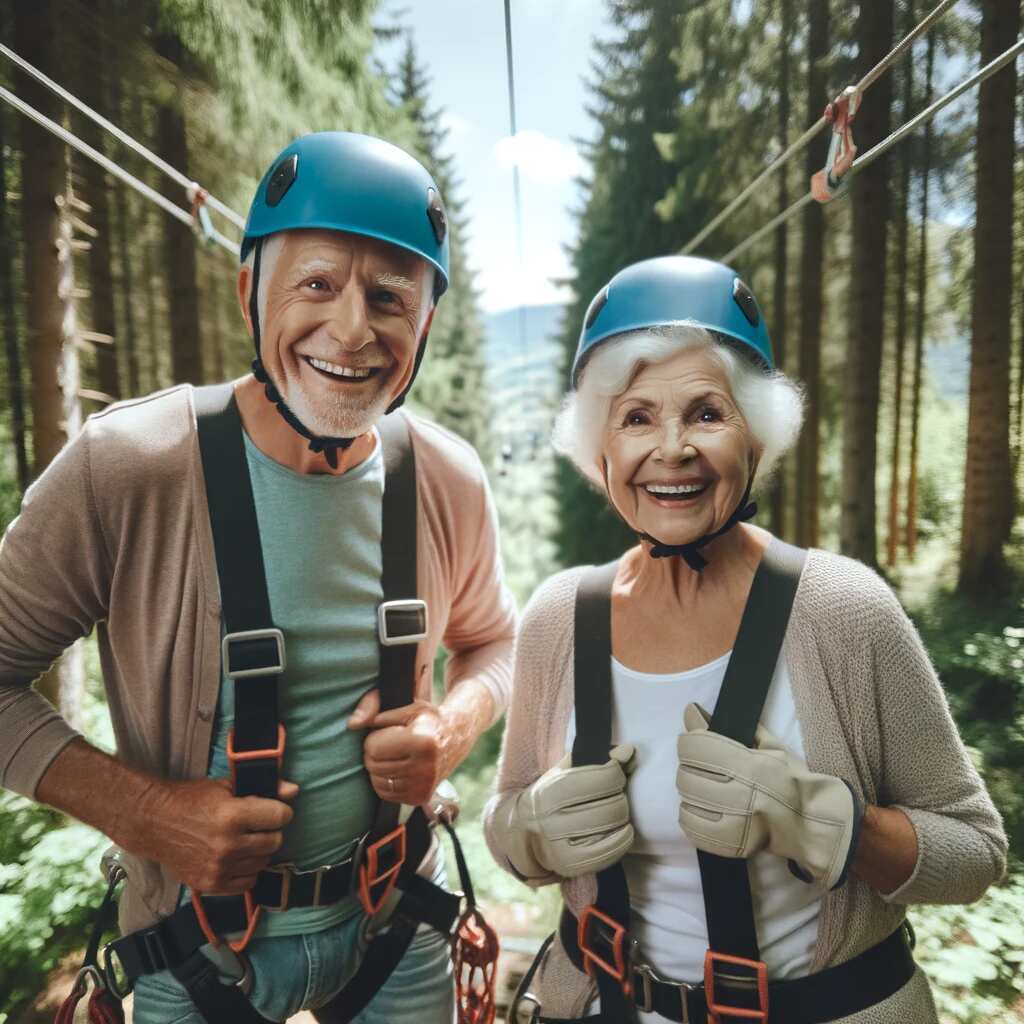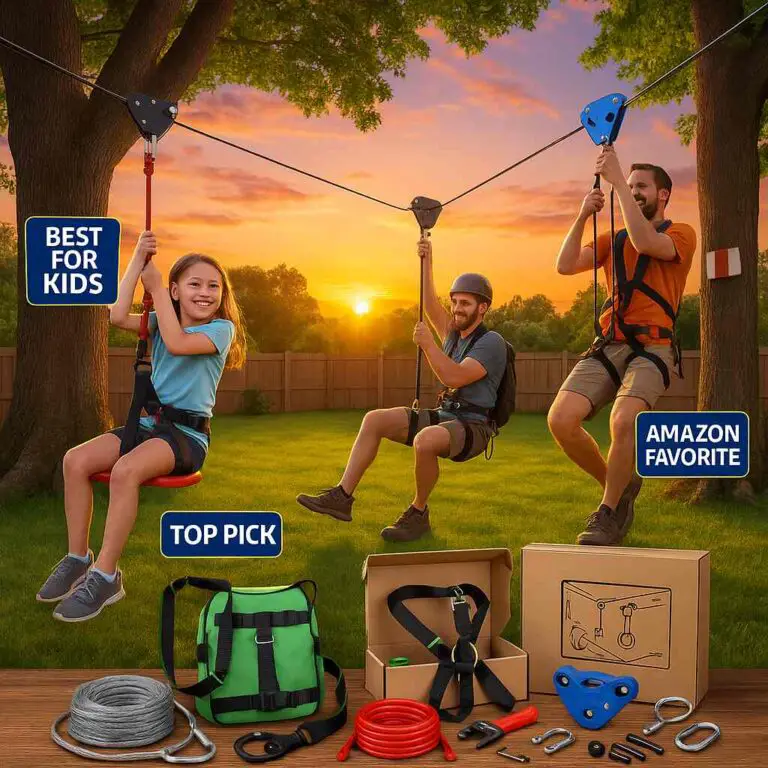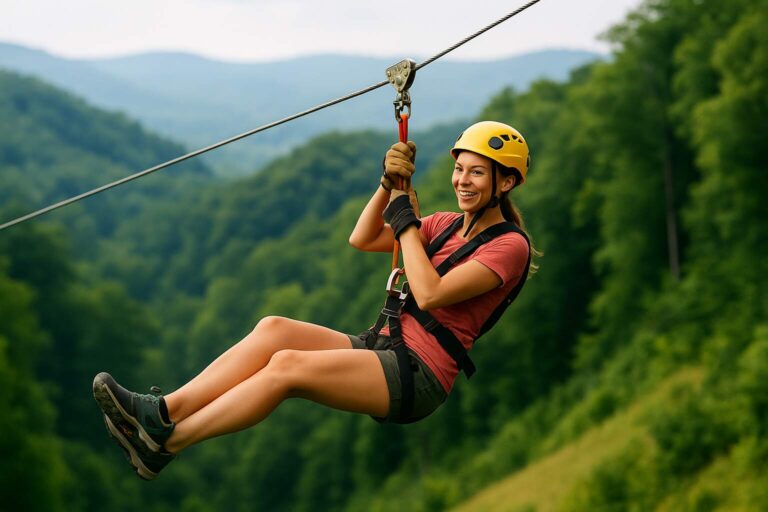As people enter their golden years, the desire for excitement and new experiences doesn’t diminish. Ziplining can still be safe for seniors. In fact, many seniors are eager to embrace life to the fullest by participating in adventurous activities like ziplining. This exhilarating sport allows individuals to glide through the air while secured to a cable, offering breathtaking views and an adrenaline rush. However, as with any activity, it’s important to consider the safety aspects, especially for seniors who may have unique concerns or limitations.
What is Ziplining?
Ziplining is an exciting outdoor recreational activity that involves traversing from one point to another while suspended from a cable, usually made of stainless steel. Participants wear a safety harness and are attached to a pulley system that allows them to glide along the cable, experiencing the thrill of speed and height while taking in the stunning natural surroundings. Ziplining can be found in various settings, including forests, mountains, and even urban environments.
Types of Ziplines and Ziplining Experiences
- Traditional Ziplines: Typically found in nature reserves and adventure parks, these zip lines offer a bird’s-eye view of forests, canyons, or other picturesque landscapes.
- Canopy Tours: These ziplines are set up high in the trees, allowing participants to explore the forest canopy and observe wildlife from a unique perspective.
- Urban Ziplines: Set up in city environments, urban ziplines offer a thrilling experience with impressive skyline views.
Benefits of Ziplining for Seniors
Physical Benefits: Ziplining can improve muscle strength, coordination, and balance while offering a low-impact form of exercise.
Mental Benefits: The adrenaline rush and sense of accomplishment from ziplining can boost mood, reduce stress, and improve overall mental well-being.
Social Benefits: Participating in ziplining with friends or family can foster connections and create lasting memories, enhancing seniors’ social lives.
In summary, ziplining is a thrilling adventure that offers various experiences, from traditional ziplines in natural settings to urban adventures. For seniors, it can provide physical, mental, and social benefits, making it an appealing activity for those looking to stay active and engaged during their golden years.
General Safety of Ziplining: Understanding the Risks and Ensuring a Safe Experience
While ziplining can be an exhilarating and memorable experience, it’s essential to understand the safety aspects and potential risks involved. Generally, ziplining is considered a safe activity, with accidents being relatively rare when compared to other adventure sports.
Ziplining Safety Statistics
According to the Association for Challenge Course Technology (ACCT), the rate of accidents in the zipline industry is around 0.02 accidents per 1,000 participants.
Most accidents that do occur are often due to human error or failure to follow safety guidelines and instructions.
Factors that Contribute to Ziplining Accidents
Operator error: This includes improper training of staff, lack of maintenance or inspections, and failure to follow established safety protocols.
Participant error: Accidents can also occur due to the participant’s failure to adhere to safety instructions, misuse of equipment, or attempting stunts beyond their ability.
Equipment failure: While rare, accidents can result from faulty or worn-out equipment. (read the complete guide to zipline for safety and braking system)
Importance of Following Safety Guidelines and Instructions:
To minimize the risk of accidents, it is crucial for both operators and participants to follow safety guidelines and instructions closely. Participants should pay attention to pre-zipline safety briefings, use the equipment correctly, and communicate with guides and staff as needed.
Ziplining is generally considered a safe activity, with a low accident rate compared to other adventure sports. By choosing a reputable ziplining company, following safety guidelines, and using equipment correctly, participants can enjoy a thrilling and secure ziplining experience.
Related article: Is Ziplining Dangerous?
Safety Considerations for Seniors: Addressing Age-Related Concerns and Ensuring a Secure Ziplining Experience
As seniors consider participating in ziplining, it’s essential to be aware of age-related physical limitations and health concerns that could impact their safety. By understanding and addressing these factors, seniors can better prepare for a secure and enjoyable ziplining adventure.
Age-Related Physical Limitations and Health Concerns
Mobility issues: Seniors may experience reduced strength, flexibility, and range of motion, making it more challenging to navigate the zipline course or manage the necessary physical movements.
Balance and coordination: Age can impact balance and coordination, which are crucial for maintaining stability during ziplining.
Chronic health conditions: Seniors may have pre-existing health conditions, such as heart issues or high blood pressure, that could pose risks during physically demanding activities like ziplining.
Addressing Age-Related Concerns
Pre-ziplining medical clearance: Before participating in ziplining, seniors should consult with their healthcare provider to ensure they are physically fit for the activity and discuss any potential risks associated with their specific health conditions.
Tailored ziplining experiences: Some zipline operators offer experiences specifically designed for seniors, with slower speeds, shorter courses, and additional support to accommodate age-related limitations.
Use of adaptive equipment: Seniors can benefit from using adaptive equipment, such as harnesses with additional padding or support, to improve comfort and safety during the ziplining experience.
In summary, seniors should carefully consider their individual physical limitations and health concerns when deciding to participate in ziplining. By seeking medical clearance, choosing tailored ziplining experiences, and utilizing adaptive equipment, seniors can safely enjoy the thrill of ziplining while minimizing potential risks.
Tips for a Safe and Enjoyable Ziplining Experience: Ensuring a Memorable Adventure for Seniors
To make the most of your ziplining adventure and prioritize safety, it’s essential to follow a few key tips. By adhering to these guidelines, seniors can have a secure and enjoyable experience while ziplining.
Proper attire and equipment use
- Wear comfortable, weather-appropriate clothing that allows for easy movement and does not interfere with the harness.
- Closed-toe shoes with good traction, such as sneakers or hiking boots, are recommended.
- Ensure that all safety equipment, including harnesses, helmets, and gloves, is properly fitted and securely fastened.
Staying within personal limits
- Be honest with yourself about your physical capabilities and comfort level. If you have concerns, communicate them with the staff and consider a more accessible course or slower speed.
- Listen to your body and avoid pushing yourself beyond your limits, which could lead to injury or discomfort.
Communicating with guides and staff
- Pay close attention to pre-zipline safety briefings and ask questions if you’re unsure about any instructions.
- Inform the guides and staff of any physical limitations, medical conditions, or concerns that may affect your ziplining experience.
- If you feel uncomfortable or need assistance during the activity, do not hesitate to communicate with the guides or staff.
Participating in a group or with a buddy
- Ziplining with friends, family, or a group can provide additional support and enhance the overall experience.
- Having a buddy to share the adventure can increase confidence and provide peace of mind.
In conclusion, ziplining can be a safe and thrilling adventure for seniors when approached with the right knowledge and precautions. By following these tips and prioritizing safety, seniors can enjoy an unforgettable ziplining experience that combines the joy of adventure with the beauty of the great outdoors.
Conclusion
Ziplining is an exciting activity that offers numerous benefits for seniors, including physical exercise, mental stimulation, and social interaction. While safety is a primary concern, the risks associated with ziplining are relatively low when proper precautions are taken.
Seniors interested in ziplining should consider their individual physical capabilities, health conditions, and comfort levels. Seeking medical clearance when necessary and choosing ziplining experiences that cater to their needs can help ensure a secure and enjoyable adventure.
Ultimately, ziplining can be a source of exhilaration and empowerment for seniors, allowing them to embrace life’s adventures and create lasting memories.








